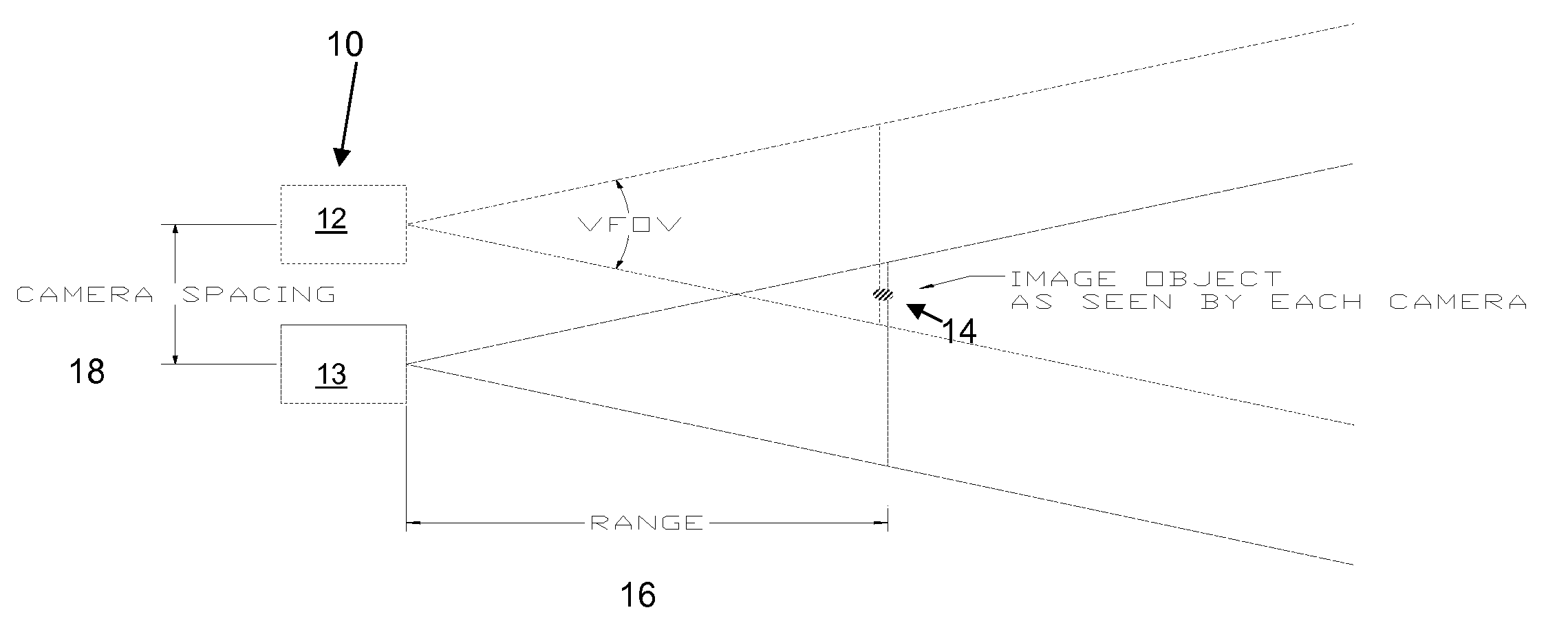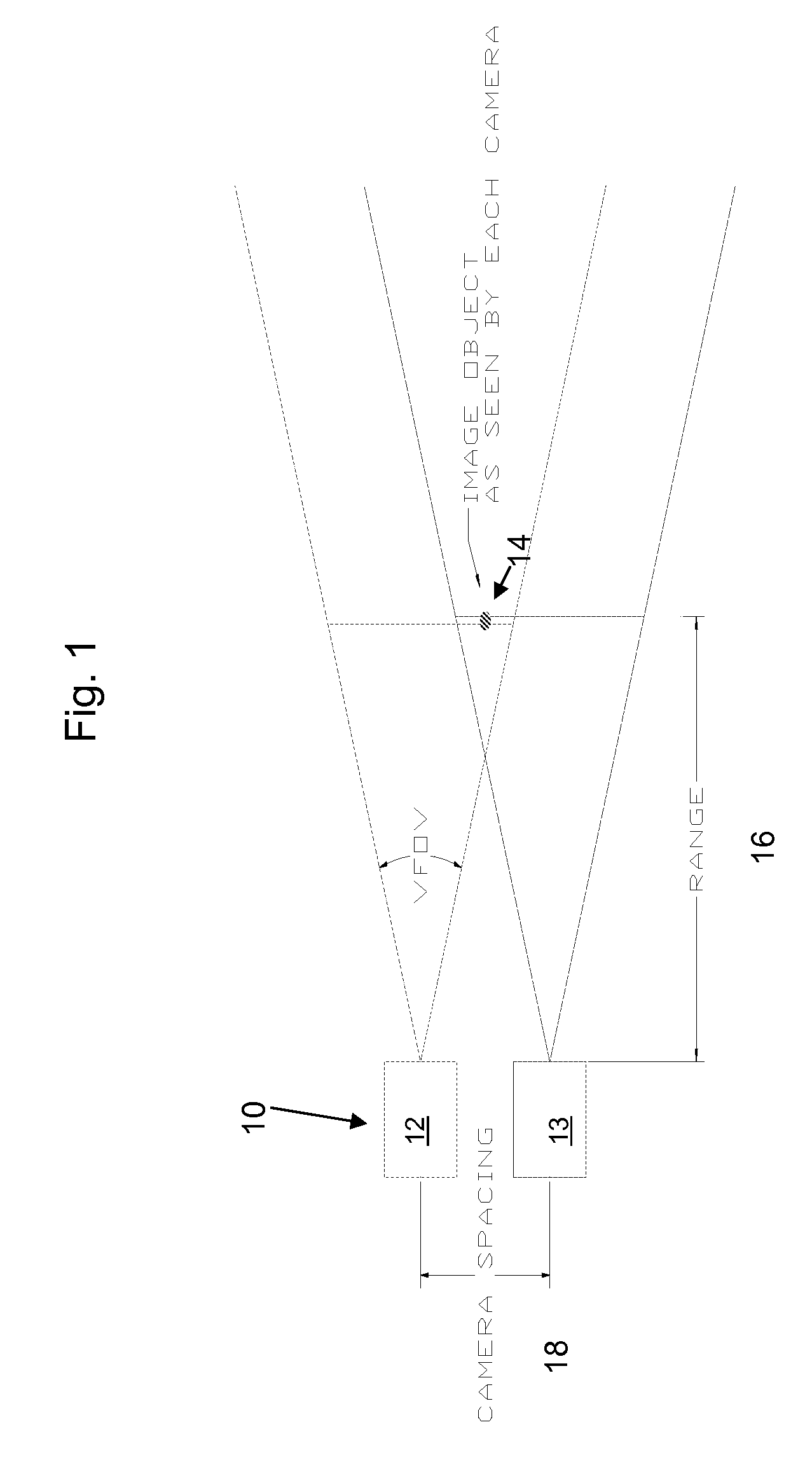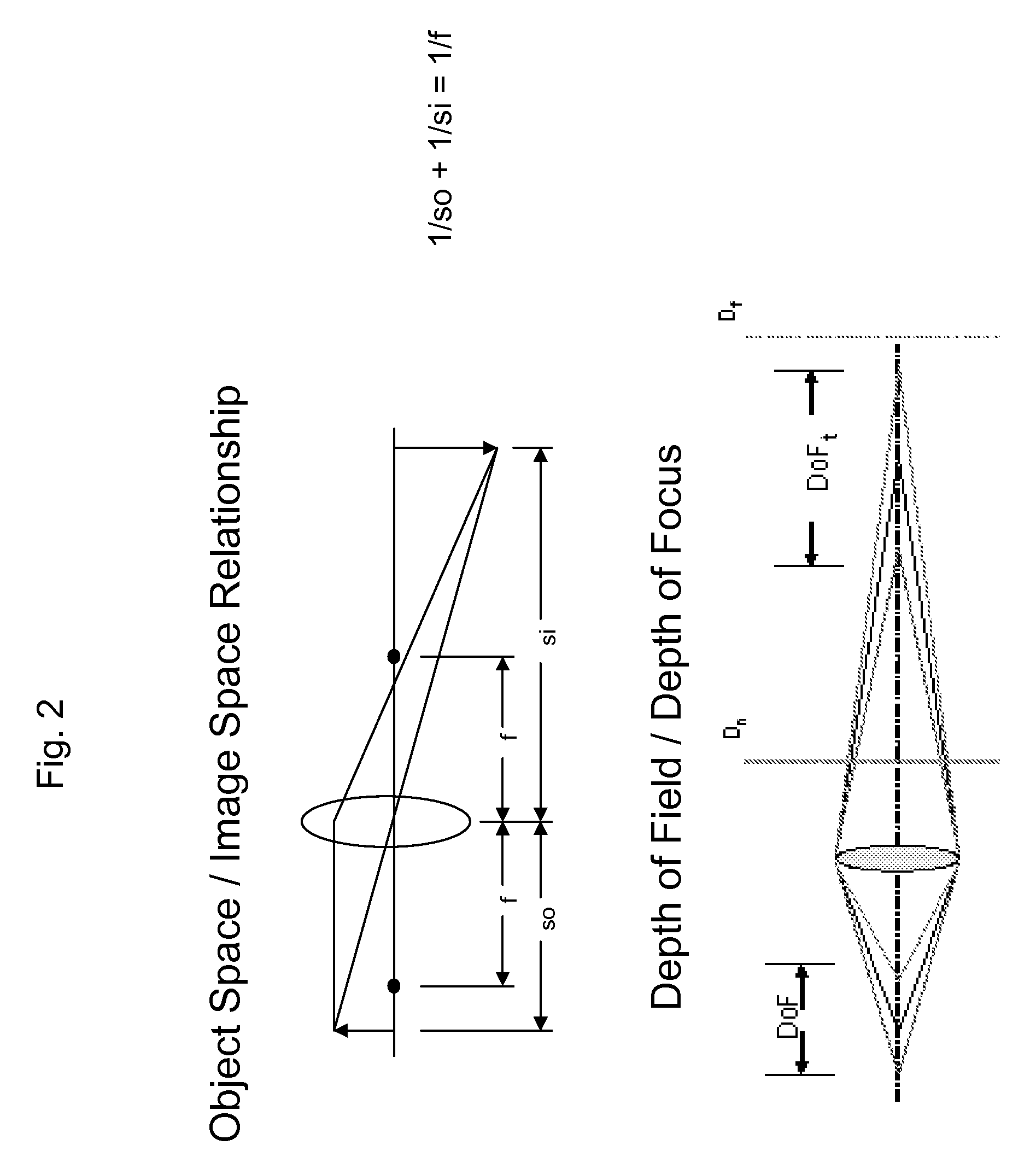Focus actuated vergence
a focus and vergence technology, applied in the field of parallax correction systems, can solve the problems of consuming additional electrical power, affecting the operation of battery operated devices, and requiring additional computations for added electronic image processing,
- Summary
- Abstract
- Description
- Claims
- Application Information
AI Technical Summary
Benefits of technology
Problems solved by technology
Method used
Image
Examples
examples
Ranging and GPS Coordinate Extraction
[0063]As illustrated in FIG. 1, the amount of image offset to be introduced into an acquired image to achieve pixel correspondence to imagery acquired from another camera can be determined if the separation distance between the cameras and the range the object is known. Since the separation distance is typically fixed by the specific geometry of the system, and an indication of range developed from focus control or lens position, the amount of image offset can be uniquely determined. This approach avoids reliance on complex image processing techniques to achieve this result, with an attendant reduction in associated power consumption. In addition, the need for a separate vergence adjustment control is eliminated, simplifying the user interface.
[0064]An extension of this concept can be used to derive Global Positioning System (GPS) coordinates of objects in the field of view based on the amount of parallax-induced image offset observed between cor...
PUM
 Login to View More
Login to View More Abstract
Description
Claims
Application Information
 Login to View More
Login to View More - R&D
- Intellectual Property
- Life Sciences
- Materials
- Tech Scout
- Unparalleled Data Quality
- Higher Quality Content
- 60% Fewer Hallucinations
Browse by: Latest US Patents, China's latest patents, Technical Efficacy Thesaurus, Application Domain, Technology Topic, Popular Technical Reports.
© 2025 PatSnap. All rights reserved.Legal|Privacy policy|Modern Slavery Act Transparency Statement|Sitemap|About US| Contact US: help@patsnap.com



